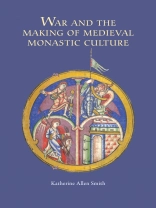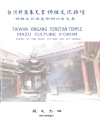Finalist for AAH First Book Prize
The monastic life, traditionally considered as an area of withdrawal from the world, is here shown to be shaped by metaphors of war, and to be actively engaged with battle in the world outside.
An extremely interesting and important book… makes an important contribution to the history of medieval monastic spirituality in a formative period, whilst also fitting into wider debates on the origins, development and impactof ideas on crusading and holy war. Dr William Purkis, University of Birmingham
Monastic culture has generally been seen as set apart from the medieval battlefield, as ‘those who prayed’ were set apart from ‘those whofought’. However, in this first study of the place of war within medieval monastic culture, the author shows the limitations of this division. Through a wide reading of Latin sermons, letters, and hagiography, she identifies a monastic language of war that presented the monk as the archetypal ‘soldier of Christ’ and his life of prayer as a continuous combat with the devil: indeed, monks’ claims to supremacy on the spiritual battlefield grew even louder as Church leaders extended the title of ‘soldier of Christ’ to lay knights and crusaders. So, while medieval monasteries have traditionally been portrayed as peaceful sanctuaries in a violent world, here the author demonstrates thatmonastic identity was negotiated through real and imaginary encounters with war, and that the concept of spiritual warfare informed virtually every aspect of life in the cloister. It thus breaks new ground in the history of European attitudes toward warfare and warriors in the age of the papal reform movement and the early crusades.
Katherine Allen Smith is Assistant Professor of History, University of Puget Sound.
İçerik tablosu
Introduction
Encountering War in the Scriptures and Liturgy
Monks and Warriors: Negotiating Boundaries
Spiritual Warfare: The History of an Idea to c.1200
Martial Imagery in Monastic Texts
Warriors as Spiritual Exemplars
Conclusion
Appendix: The
Loricati, c.1050-1250
Bibliography












